National Museum
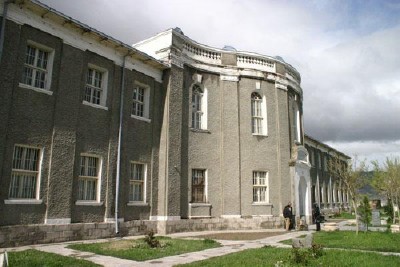
Street address: Darulaman, District 6, Kabul, Afghanistan
Telephone: 93 (0) 752 014259
E-mail: info@nationalmuseum.af
Website: http://www.nationalmuseum.af/
Proprietor: Ministry of Information and Culture - Department of Museums
Contact: Omara Khan Masoodi Director
Telephone: 93 (0) 700 290333
Contact: Mohammad Yahia Muheeb Zada Deputy Director
Telephone: 93 (0) 700 296655
Opening hours: 8am-12pm, 1pm-3.30pm Sat-Thu, 9-12am Fri
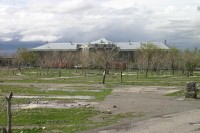
In time the collection included some objects excavated by French archaeologists from the Délégation archéologique Française en Afghanistan (DAFA), which was established as part of a bilateral agreement signed between the French and Afghan governments in 1922. Under the provisions of its establishment, DAFA had exclusive access to archaeological excavation in the country for 30 years, during which period finds were to be shared between the two countries.
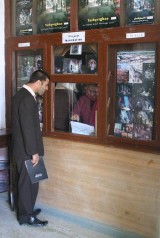
Until 1952 the National Museum received a range of important archaeological finds from DAFA’s excavations. These included sculptures and frescoes from the Buddhist sites at Hadda and Bamiyan; architectural artefacts, bronze and ceramics from Ghazni; ivory, bronze and glass from Begram, north of Kabul, as well as architectural elements from Ai Khanoum on the banks of the Oxus river. These were supplemented by subsequent finds by archaeologists from Britain, India, Italy, Japan, the USA and USSR. So important was the collection that an international touring exhibition of key objects was organised in 1964.
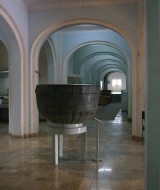 Of the objects in the museum, perhaps the most important was that unearthed in 1978 by an Afghan-Soviet archaeological team at a Bactrian nomad burial site at Tilla Tepe in northern Afghanistan, dating to perhaps 2,000 years ago. The so-called Bactrian Hoard included objects worked from gold, silver, ivory, lapis lazuli and precious stones.
Of the objects in the museum, perhaps the most important was that unearthed in 1978 by an Afghan-Soviet archaeological team at a Bactrian nomad burial site at Tilla Tepe in northern Afghanistan, dating to perhaps 2,000 years ago. The so-called Bactrian Hoard included objects worked from gold, silver, ivory, lapis lazuli and precious stones.By 1979 the National Museum contained an estimated 100,000 objects, some 600 of which were on display. In addition, it had a substantial coin collection and many objects of ethnographic significance. The collection was briefly put into storage in 1980 when the entire Darulaman area was designated a military zone, shortly after the leftist coup of that year. It was at this time that the museum staff dispersed parts of the collection to different sites in the city, during which process inventories were misplaced. Objects from provincial museums in Balkh, Ghazni, Herat, Nangarhar and Kandahar were also moved to the National Museum for safekeeping. The building narrowly escaped serious damage in 1990, when the adjoining Darulaman Palace, then used by the Ministry of Defence, was bombed during an attempted coup. Given the widespread insecurity across the country, little was added to the collection during the period of Soviet occupation which lasted until 1989, although some research on the collection continued.
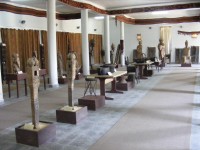 Following the overthrow of the Najibullah government in 1992, the Darulaman area was effectively on the front lines between mujahideen factions who battled for control of southern Kabul. The museum building was systematically looted by mujahideen fighters in the winter of 1993-4, before being set alight. Efforts were made by government and UN staff in Kabul at that time to secure the building and retrieve some of the remaining objects. However, despite repeated requests to the leader of Hizbe Wahdat, whose fighters controlled the area at that time, looting continued apace with many objects re-appearing for sale in nearby street bazaars. Without a full pre-war inventory it is difficult to establish the extent of looting or damage, but perhaps half of the collection was lost within a year.
Following the overthrow of the Najibullah government in 1992, the Darulaman area was effectively on the front lines between mujahideen factions who battled for control of southern Kabul. The museum building was systematically looted by mujahideen fighters in the winter of 1993-4, before being set alight. Efforts were made by government and UN staff in Kabul at that time to secure the building and retrieve some of the remaining objects. However, despite repeated requests to the leader of Hizbe Wahdat, whose fighters controlled the area at that time, looting continued apace with many objects re-appearing for sale in nearby street bazaars. Without a full pre-war inventory it is difficult to establish the extent of looting or damage, but perhaps half of the collection was lost within a year.During 1995 the ruins of the museum were stabilised and the stores again rendered relatively secure. Efforts were made at this time by several groups, including the Society for the Preservation of Afghanistan’s Cultural Heritage (SPACH), to disseminate information about lost items from the museum collection and identify objects that had begun to re-appear for sale in Pakistan and Europe. Although the Afghans involved in the dispersal of the collection before the conflict knew that important objects were still safe in Kabul, there remained a very real risk of further looting, so this was not made public at the time.
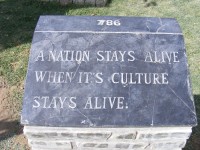 Having forced the mujahideen to retreat from Kabul in 1996, the Taliban issued decrees banning unauthorised excavations and the illegal trade in antiquities. However, in February 2001 a decree was issued calling for the destruction of non-Islamic artefacts and graves, which led to the destruction of the Bamiyan buddhas. At this time a group Talibs entered the National Museum and destroyed objects that were perceived to be un-Islamic, including statues of Kanishka and Bodhisattva, as well as objects from Nuristan.
Having forced the mujahideen to retreat from Kabul in 1996, the Taliban issued decrees banning unauthorised excavations and the illegal trade in antiquities. However, in February 2001 a decree was issued calling for the destruction of non-Islamic artefacts and graves, which led to the destruction of the Bamiyan buddhas. At this time a group Talibs entered the National Museum and destroyed objects that were perceived to be un-Islamic, including statues of Kanishka and Bodhisattva, as well as objects from Nuristan.The overthrow of the Taliban in late 2001 saw renewed interest in the reconstruction of the National Museum, as part of the wider process of recovery. The building was re-roofed and in October 2004 formally re-opened by the President. Prior to this, the Bactrian Hoard and other valuable items were retrieved from the vault of the Da Afghanistan Bank, where they had been stored for safekeeping in 1980, and inventoried. Some 230 objects from this collection, as well as items from Begram, Tepe Fullol and Ai Khanoum, form part of the travelling exhibition Afghanistan, Hidden Treasures from the National Museum, Kabul, which has since toured France, Italy, the Netherlands and the USA. In 2007 the International Council of Museums (ICOM) distributed a 'Red List' of types of objects missing from the National Museum collection, aimed at making dealers aware of objects that might have been stolen.
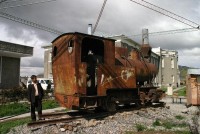 With the resumption of joint archaeological excavations with France, Germany and Japanese teams, objects continue to be added to the collection of the National Museum, although more than half of the estimated 12,000 artefacts acquired since 2001 have come from illegal excavations. The return of objects in 2008 from Switzerland to the National Museum by the Afghanistan Museum in Exile represented a further step forward in the process of recovery.
With the resumption of joint archaeological excavations with France, Germany and Japanese teams, objects continue to be added to the collection of the National Museum, although more than half of the estimated 12,000 artefacts acquired since 2001 have come from illegal excavations. The return of objects in 2008 from Switzerland to the National Museum by the Afghanistan Museum in Exile represented a further step forward in the process of recovery.In recent years the focus has been on developing the skills of staff of the Department of Museums in museum management, documentation and restoration, among other subjects. With support from French, Italian and Japanese specialists, some 2,000 objects have been restored to date, but the condition of many others in store is unclear.
Reform of the existing system of tahwildar (key-holders), whereby staff assume personal responsibility for a part of the collection, and the introduction of a curatorial structure has been a further issue. A major concern has been the provision of additional space for the storage, conservation and exhibition of the growing collections of the National Museum.
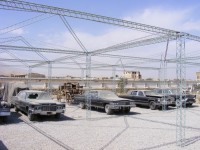 In March 2011 the Embassy of the United States of America in Afghanistan and the Ministry of Information and Culture pledged funds for a new museum building with state of the art security, conservation and administrative space as well as exhibition space for the material currently shown in the travelling exhibition Afghanistan, Hidden Treasures from the National Museum, Kabul. Further US funds were pledged for training and capacity building for the National Museum staff.
In March 2011 the Embassy of the United States of America in Afghanistan and the Ministry of Information and Culture pledged funds for a new museum building with state of the art security, conservation and administrative space as well as exhibition space for the material currently shown in the travelling exhibition Afghanistan, Hidden Treasures from the National Museum, Kabul. Further US funds were pledged for training and capacity building for the National Museum staff.The National Museum houses the secretariat of the International Council of Museums (ICOM), Afghanistan.
National Museum Library
